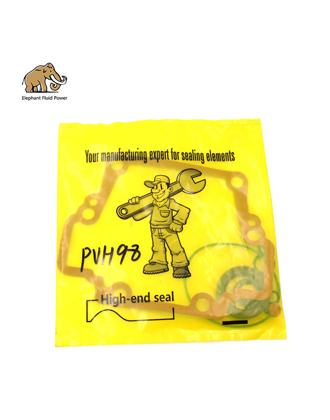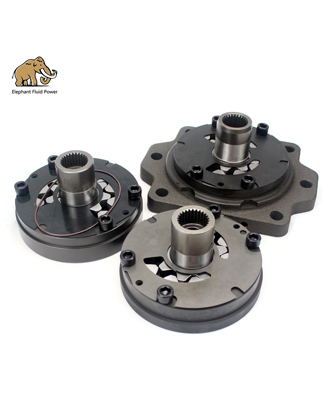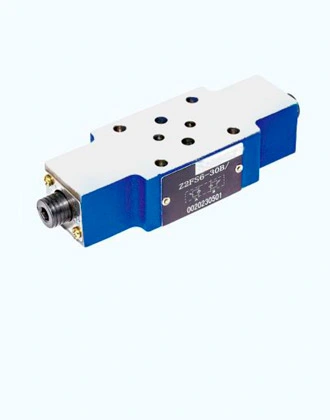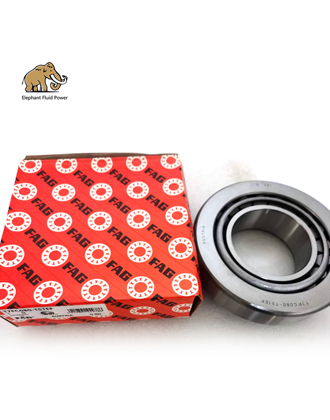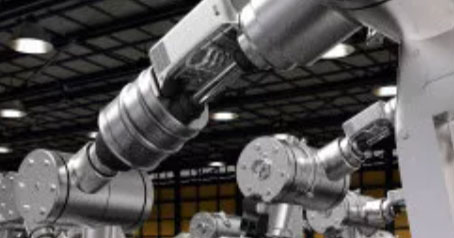Hydraulic pumps come in different forms to suit a range of application requirements from industrial molding presses to heavy off-road equipment. One hydraulic system can be very different from another. For one system, a hydraulic piston pump may be the best solution, while a hydraulic gear pump may be better suited for a different system.
1. What is a hydraulic piston pump?
Hydraulic piston pumps are powered by hydraulic drives and employ a reciprocating positive displacement design to manage fluid flow. Cylindrical elements in the piston or cylinder block create a vacuum created by the drive mechanism, which draws in fluid. The cylindrical chamber is pressurized by distributing energy into the fluid, compressing and forcing it towards the outlet of the pump.
The basic design produces about 4,000 psi, but pumps are available for working pressures up to 14,500 psi. There are many different models that can displace a specific amount of fluid. Some allow you to adjust the displacement per revolution, which can make them more energy efficient. Piston pumps are relatively complex and expensive in design, but are useful in energy efficient applications that require high pressure and effective oil flow control.
2. What is a hydraulic gear pump?
A hydraulic gear pump is a lower cost option, but it is very durable and there are many options. Typical pressure ratings are around 3,000 psi, but many displacement sizes and pressures can be found. Some hydraulic gear pumps are rated up to 4,500 psi, although additional valves are required in systems that require regular flow adjustment.
Hydraulic gear pumps work by drawing fluid between their meshing gears. Adjacent gear teeth form cavities enclosed within the housing and pressure plate. A partial vacuum is created at the inlet where the gears disengage, allowing fluid to fill the space and travel along the outer edges of the gears; when the gear teeth mesh again, the fluid is pushed out of the pump.
3. The main difference between hydraulic piston pump and hydraulic gear pump
Both hydraulic piston pumps and hydraulic gear pumps use hydraulic oil to transfer energy or generate mechanical force. Hydraulic piston pumps rely on reciprocating motion. Rotational force is generated along the axis. Fixed and variable displacement pumps are available, as well as different types of pumps including axial, inline, bent axis, plunger and radial pumps, each with their own unique method of propelling fluid.
Hydraulic gear pumps, on the other hand, move fluid through closely aligned gears that create suction to draw in and discharge fluid. Depending on the application requirements, pumps with internal or external gears can be used. Lobe, progressive cavity and vane pumps are just some of the types available. One disadvantage of using gear pumps is the need for additional equipment to control the desired displacement, since they only operate on a fixed displacement.
 French
French
 Portuguese
Portuguese
 Russian
Russian
 German
German
 Spanish
Spanish
 Japanese
Japanese
 Korean
Korean
 Irish
Irish
 Greek
Greek
 Turkish
Turkish
 Italian
Italian
 Danish
Danish
 Romanian
Romanian
 Indonesian
Indonesian
 Czech
Czech
 Afrikaans
Afrikaans
 Swedish
Swedish
 Polish
Polish
 Basque
Basque
 Catalan
Catalan
 Esperanto
Esperanto
 Hindi
Hindi
 Lao
Lao
 Albanian
Albanian
 Amharic
Amharic
 Armenian
Armenian
 Azerbaijani
Azerbaijani
 Belarusian
Belarusian
 Bengali
Bengali
 Bosnian
Bosnian
 Bulgarian
Bulgarian
 Cebuano
Cebuano
 Chichewa
Chichewa
 Corsican
Corsican
 Croatian
Croatian
 Dutch
Dutch
 Estonian
Estonian
 Filipino
Filipino
 Finnish
Finnish
 Frisian
Frisian
 Galician
Galician
 Georgian
Georgian
 Gujarati
Gujarati
 Haitian
Haitian
 Hausa
Hausa
 Hawaiian
Hawaiian
 Hebrew
Hebrew
 Hmong
Hmong
 Hungarian
Hungarian
 Icelandic
Icelandic
 Igbo
Igbo
 Javanese
Javanese
 Kannada
Kannada
 Kazakh
Kazakh
 Khmer
Khmer
 Kurdish
Kurdish
 Kyrgyz
Kyrgyz
 Latin
Latin
 Latvian
Latvian
 Lithuanian
Lithuanian
 Luxembourg
Luxembourg
 Macedoniar
Macedoniar
 Malagasy
Malagasy
 Malay
Malay
 Malayalam
Malayalam
 Maltese
Maltese
 Maori
Maori
 Marathi
Marathi
 Mongolian
Mongolian
 Burmese
Burmese
 Nepali
Nepali
 Norwegian
Norwegian
 Pashto
Pashto
 Persian
Persian
 Punjabi
Punjabi
 Serbian
Serbian
 Sesotho
Sesotho
 Sinhala
Sinhala
 Slovak
Slovak
 Slovenian
Slovenian
 Somali
Somali
 Samoan
Samoan
 Scots Gaelic
Scots Gaelic
 Shona
Shona
 Sindhi
Sindhi
 Sundanese
Sundanese
 Swahili
Swahili
 Tajik
Tajik
 Tamil
Tamil
 Telugu
Telugu
 Thai
Thai
 Ukrainian
Ukrainian
 Urdu
Urdu
 Uzbek
Uzbek
 Vietnamese
Vietnamese
 Welsh
Welsh
 Xhosa
Xhosa
 Yiddish
Yiddish
 Yoruba
Yoruba
 Zulu
Zulu

